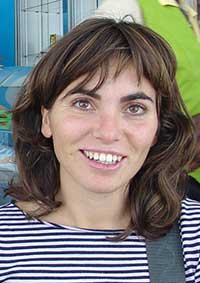Geophysics of Plates, Mantle, and Margins
Lecturers: Marta Pérez Gussinyé, Volkhard Spieß
Rifted margins, mid-ocean ridges and subduction zones are key elements of the Earth’s plate tectonic cycle. This lecture deals with geophysical methods, data and models to characterize their properties, understand their kinematics and discuss the geodynamical implications. Geophysical evidence from earthquake seismology, reflection and refraction seismics as well as heat flow, magnetic and gravity measurements are used. Exercises are carried out using simple numerical modelling techniques.
Learn and understand:
1- the main geophysical characteristics of rifted margins, oceanic ridges and and subduction zones.
2- the physical principles driving the tectonic architecture in these areas.
3- the geophysical methods used to explore these areas and their working principles.
Students will be given a group exercise to work on. The results will be presented in a short oral presentation at the end of the course.
Mündliche Gruppenprüfung
1) Turcotte, D. L. & G. Schubert (2002): Geodynamics: Applications of Continuums Physics to Geological Problems. John Wiley and Sons, New York
2) Basin Analysis: Principles and Applicatin to Petroleum Play Assessment, Allen and Allen, Willey - Blackwell
3) Mid-ocean ridges, Searle, Cambridge University Press
4) The oceanic crust, from accretion to mantle recycling, Juteau and Maury, Springer
1st SWS: Introduction
2nd SWS: Plate tectonic basics
3rd SWS: Sea floor spreading and plate kinematics
4th SWS: Mid-ocean ridges and transform faults
5th SWS: Active margin basics
6th SWS: Erosive subduction margins
7th SWS: Accretionary subduction margins
8th SWS: Geodynamics of mid-ocean ridges
9th SWS: Cooling and subsidence of the oceanic lithosphere
10th SWS: Variations of oceanic lithosphere morphology and melting with spreading rate
11th SWS: Introduction to rifted margins
12th SWS: Observational departures from simple model predictions.
13th SWS: Modern observations at rifted margins, and the geodynamical perspective on subsidence and heat-flow.
14th SWS: Exam
Notebook-Pool
Basic Data
05-MMG-OC2-1
Study Program
Master Marine Geosciences
Module Name
Geophysics of Plates, Mantle and Margins
Course Type
Lecture, Exercise (L+E)
First Year of Study
6 CP
4 SWS
Summer Term
Course Language
English
Contact Person

Meerestechnik – Umweltforschung
Prof. Dr. Volkhard Spieß
GEO 4550R
Phone: +49 421 218 - 65370
vspiess uni-bremen.de
uni-bremen.de
Meerestechnik – Umweltforschung
Prof. Dr. Volkhard Spieß
GEO 4550R
Phone: +49 421 218 - 65370
vspiess uni-bremen.de
uni-bremen.deLecturer

Prof. Dr. Marta Pérez Gussinyé
GEO 4340
Phone: +49 421 218 - 65350
gussinye uni-bremen.de
uni-bremen.de
Prof. Dr. Marta Pérez Gussinyé
GEO 4340
Phone: +49 421 218 - 65350
gussinye uni-bremen.de
uni-bremen.de
Prof. Dr. Volkhard Spieß
GEO 4550
Phone: +49 421 218 - 65370
vspiess uni-bremen.de
uni-bremen.de
Prof. Dr. Volkhard Spieß
GEO 4550
Phone: +49 421 218 - 65370
vspiess uni-bremen.de
uni-bremen.de
